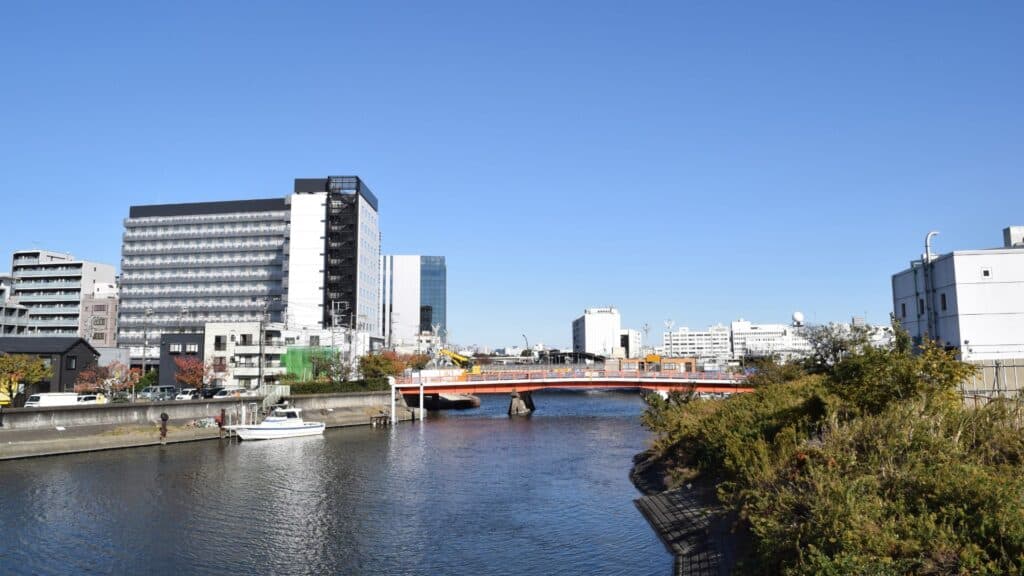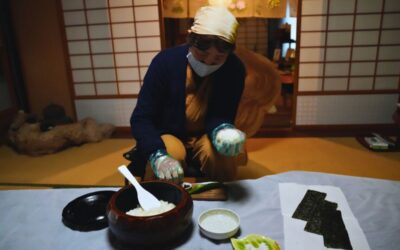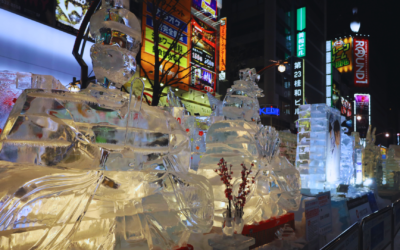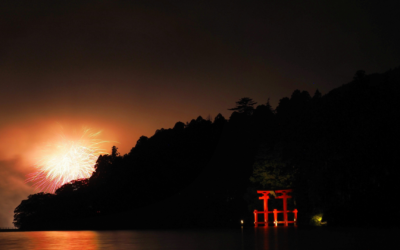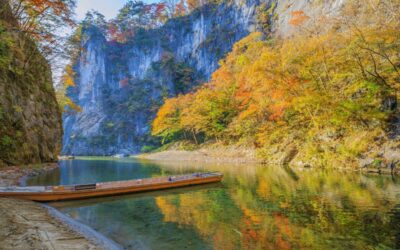Are you curious about Ota Ward, a unique gem among Tokyo’s famous 23 wards? This vibrant area boasts an array of distinctive neighborhoods, each brimming with activities to do and sights to explore. From its rich history to the best places for dining and relaxing, our comprehensive guide to Ota Ward has everything you need to know to make the most of your visit. Discover the ins and outs of Ota Ward with us!
A Quick Primer to Ota Ward

Ota Ward is located at the southernmost tip of Tokyo’s 23 wards. Ota-ku is home to Haneda Airport, one of Japan’s largest airports and the gateway to the Tokyo skyline, serving as a stopover point for many visitors to Tokyo. Interestingly, Ota-ku was named after the two major downtown areas of Omori and Kamata, and it is served by the sky-blue Keihin-Tohoku Line, which is famous for transporting people across the city. The presence of Akabane in Kita-ku, also located at the edge of Tokyo, adds to the area’s significance.
Across the Arakawa River lies Kawasaki, one of the most heavily industrialised areas in eastern Japan, and on the other side is Kawaguchi, also known for its concentration of foundry industries. Ota-ku, situated in front of Kawasaki, is part of the Keihin Industrial Zone, sharing an industrial landscape with Kawasaki and Tsurumi. This area features a downtown-like townscape with many small and medium-sized factories, especially around the waterfront.
On the other hand, if you take the Tokyu Tamagawa Line from Kamata to the inland area, you will find Denenchofu, one of Japan’s most famous and exclusive residential areas. This stark contrast within the same Ota Ward is quite remarkable. Additionally, the mountainside of Omori boasts the seriously exclusive area called Sanno, known for its cultural aroma, including the historical Magome Bunshi Mura (literary village).
Kamata’s kuroyu (black hot spring) and winged dumplings, along with the Gokai ceremony at Ikegami Honmonji Temple, are local prides. The Jindai procession at the Jingmei Grand Shrine in Kojiya is another hidden specialty. Don’t forget to explore Meguro, which offers its unique charm and attractions.
Living in Ota Ward
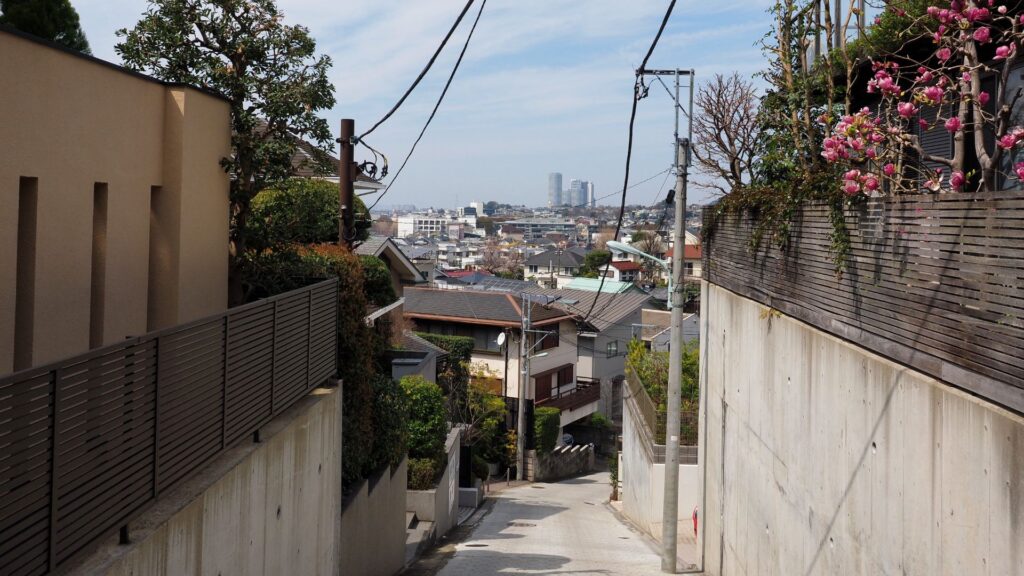
In Ota Ward, Denenchofu, Sanno on the west side of Omori Station, and Magome, known as Magome Bunshi Mura (literary village), stand out as high-class residential areas. However, most of the city retains a downtown atmosphere, with the Tokyu Ikegami and Tamagawa lines, and the seaside areas from the Keihin-Tohoku line, being popular residential spots. The areas along the Tokyu Ikegami Line and Tamagawa Line exude a commoner’s vibe.
When considering areas with high commuting convenience, the rougher regions on the ocean side often become the top choices. Despite sharing the same Omori name, there is a world of difference between the highlands of Sanno, home to real celebrities, and Heiwajima, known for its boat gambling enthusiasts and a rougher crowd. This contrast is similar to the extremes seen in Yokohama, such as Yamate-machi and Kotobukicho.
Like Kawasaki across the Tama River, Ota Ward has grown between Tokyo and Yokohama, merging both urban cultures. The Keikyu Line, which runs to and from Haneda Airport, divides its services between central Tokyo and Yokohama. The downtown area on the ocean side aligns with the Keihin industrial zone of Kawasaki and Tsurumi. Meguro, with its vibrant community and residential appeal, adds another layer to the diverse living options in Ota Ward.
History of Ota Ward

Situated at the tip of the Musashino Plateau and surrounded by the sea and rivers, Ota Ward has a rich history evident from archaeological sites like the Omori Shell Mound and the Tamagawadai Tumulus Group. These sites indicate a long and unbroken history dating back to ancient times.
During the Edo period, the area was a bustling transportation hub along the Tokaido Highway. Simultaneously, it thrived as a farming and fishing village, with nori (seaweed) cultivation flourishing in the coastal areas of Omori and Haneda. Since the Taisho period, the area has housed small and medium-sized factories, forming part of the Keihin Industrial Zone.
Residential development on the plateau progressed rapidly after the Great Kanto Earthquake, leading to the creation of new, green residential areas such as Denenchofu, Yukigaya, and Kugahara. In 1932, Omori and Kamata wards were established, and in 1947, they merged to form Ota Ward, named by combining a character from each original ward.
Between 1967 and 1992, Ota-ku expanded by reclaiming land from Tokyo Bay, becoming the largest of the 23 wards, surpassing Setagaya-ku. Meguro’s historical significance and its blend of traditional and modern elements make it a must-visit area in Tokyo.
Areas of Ota Ward
Along the JR Keihin-Tohoku Line
Kamata 蒲田
Kamata is a major entertainment district in Jonan, representing Ota Ward. The area in front of the station is a haven for homeless people and Internet cafe refugees. The west exit features a downtown arcade shopping street and the Yuzawaya handicraft store, while the Tokyu line at the station presents a different character.
After relaxing in the black hot spring baths, try the ever-popular feathered gyoza (dumplings with wings). Nearby Meguro offers its own unique set of attractions, blending seamlessly with the local culture.
Omori 大森

The west and east exits of Omori station have completely different vibes. The high-class residential area of Sanno contrasts sharply with the drinking district of Jigokudani. The east exit mirrors downtown Kamata with its array of suspicious drinking establishments and izakayas. Meguro’s sophisticated charm provides a refreshing contrast to the more raucous areas.
Keikyu Main Line and Airport Line
Keikyu Kamata 京急蒲田

A 10-minute walk from JR Kamata Station, Keikyu Kamata is undergoing large-scale redevelopment between Asuto Shopping Street and Yanagidori. Meanwhile, the forgotten east exit retains the Higashi-Kamata Kinema-dori. The neighbouring Meguro area offers additional cultural and commercial experiences.
Zoshiki 雑色
Zoshiki boasts the breathtaking Nishi-Rokugō Park along the Keihin-Tohoku line. The shopping street in front of the station exudes a downtown vibe, with the Jumbo Sagan Building housing the headquarters of OK Store, a supermarket chain serving the Tokyo metropolitan area. Meguro’s vibrant community spirit complements the bustling atmosphere of Zoshiki.
Rokkodote 六郷土手
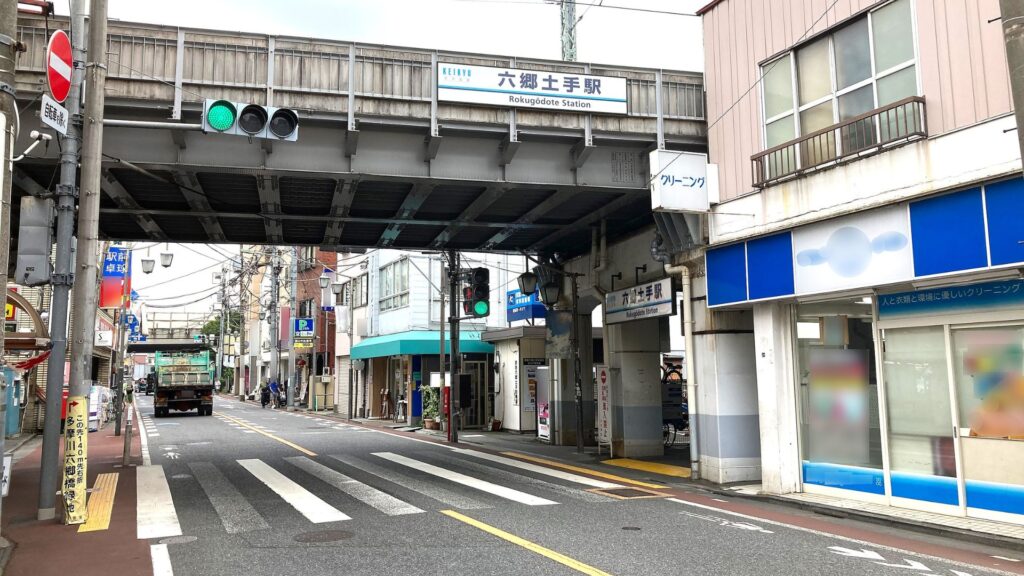
Rokkodote, the southernmost of Tokyo’s 23 wards, is surrounded by the lower reaches of the Tama River. Japan’s largest homeless village is located on the riverbed under Rokugo Bridge, on the border with Kawasaki. A simple lodging house quietly remains in front of the station, while the retro Rokugo hot springs with black water baths offer a supreme relaxation experience. Meguro’s eclectic mix of modern and traditional elements makes it an intriguing area to explore.
Umeyashiki and Omorimachi 梅屋敷・大森町
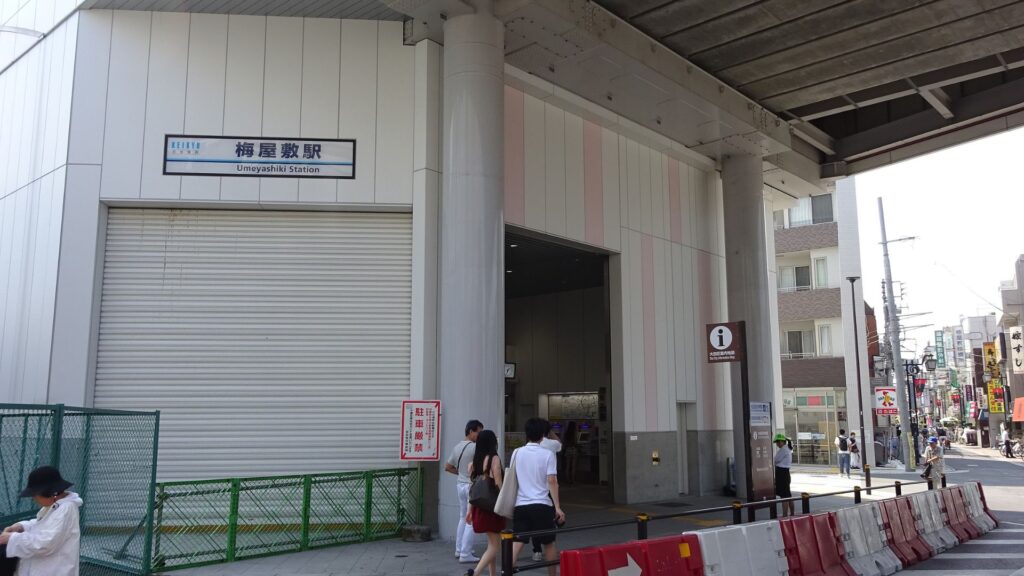
Located between Kamata and Omori, these areas feature shopping streets leading to Fukudaya, a Showa-era heritage sweet shop. Morigasaki marks the end of the Ota Ward town factory zone, with illegal moorings of homeless people living on boats at the lowest reaches of the Donagawa River. Meguro’s cultural attractions provide a stark yet fascinating contrast to these areas.
Heiwajima 平和島

Heiwajima is home to the Heiwajima Boat Racecourse, a mecca for gambling enthusiasts, and Big Fun, a popular hangout. Before the race, visitors can grab a bite at Shinanoji in front of the station. Omori Miyako Shinchi, a remnant of the red-light district, and the Nori no Furusato Kan are local attractions. Meguro’s serene and upscale vibe offers a welcome respite from the bustling Heiwajima.
Omorikaigan 大森海岸
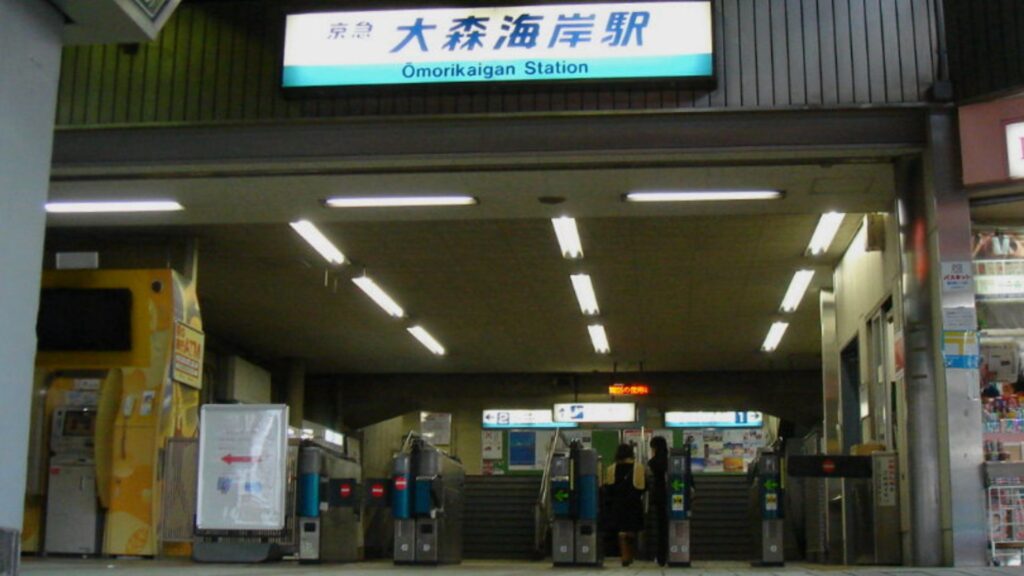
The area around Omorikaigan Station actually lies in Shinagawa Ward. However, its proximity to Ota Ward means it shares many characteristics with its neighbouring areas. Meguro’s proximity allows for easy access to both regions, blending the best of both worlds.
Kojiya 糀谷

Kojiya is a splendid downtown shopping paradise, featuring Oide Street, Kojiya shopping street, and Haginaka Street. It is also home to the local new religion, Shinmei Daijingu. The annual Jindai procession is a surprise even for Misuzu Gakuen. Meguro’s rich cultural scene offers an interesting counterpoint to the bustling streets of Kojiya.
Otorii 大鳥居
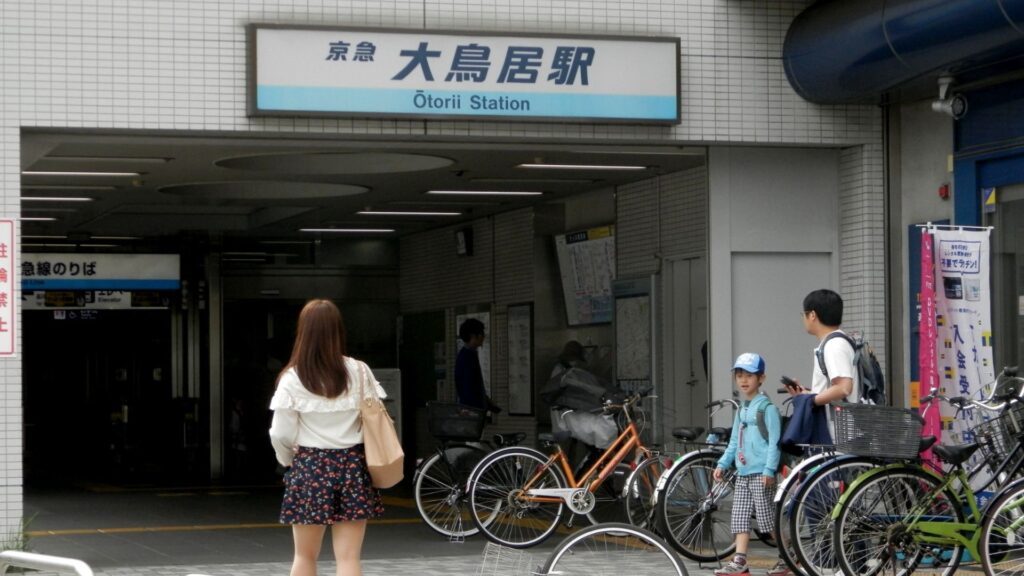
The headquarters of Watami and Sega are located in Otorii. Although the radio wave house in Higashi-kohjiya 4-chome was demolished in 2011, its legacy remains. Nearby Meguro’s blend of contemporary and traditional culture makes it a fascinating area to visit.
Anamori Inari 穴守稲荷

Anamori Inari Shrine, once confiscated by the U.S. military, has its grounds moved but retains its historical significance. Originally worshipped by prostitutes in the Edo period, it now sees many votive ema (votive picture tablets) from people in the aviation industry. Meguro’s historical sites and modern developments provide a rich backdrop for exploring Tokyo’s diverse history.
Tenkubashi 天空橋
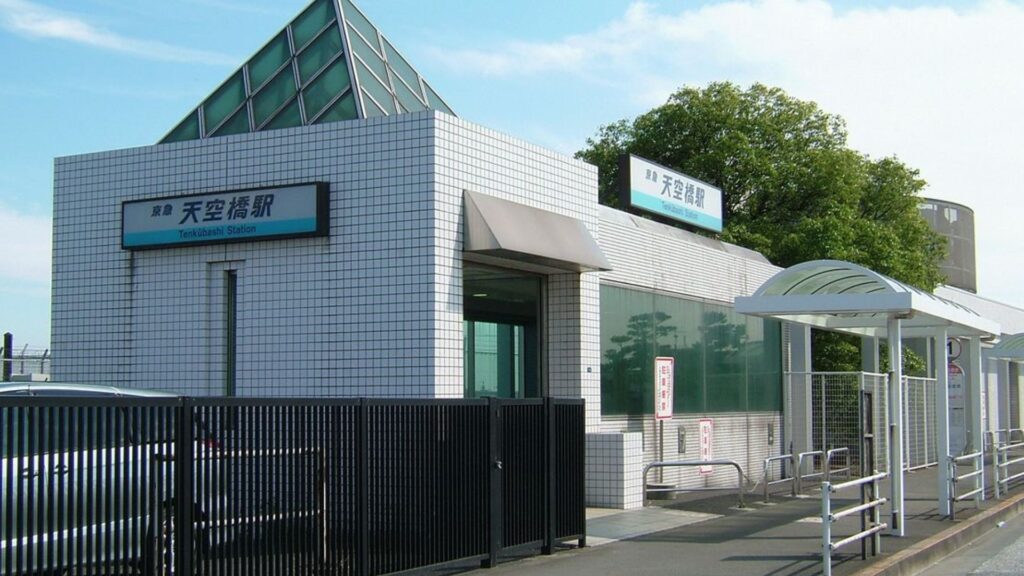
Tenkubashi is marked by the red torii gate of Anamori Inari Shrine and the Ebitorigawa and Tama Rivers, filled with the vestiges of fishing villages. Hanetaura is a hidden place for ebb and flow tides. The airport island, once a bustling town, disappeared when the airport was confiscated. Meguro’s serene parks and historical sites
Haneda Airport 羽田空港

As the gateway to Tokyo’s skies, Haneda Airport is a bustling hub of activity. Its proximity to Meguro allows travellers easy access to a more tranquil and culturally rich part of Tokyo.
Hasunuma 蓮沼
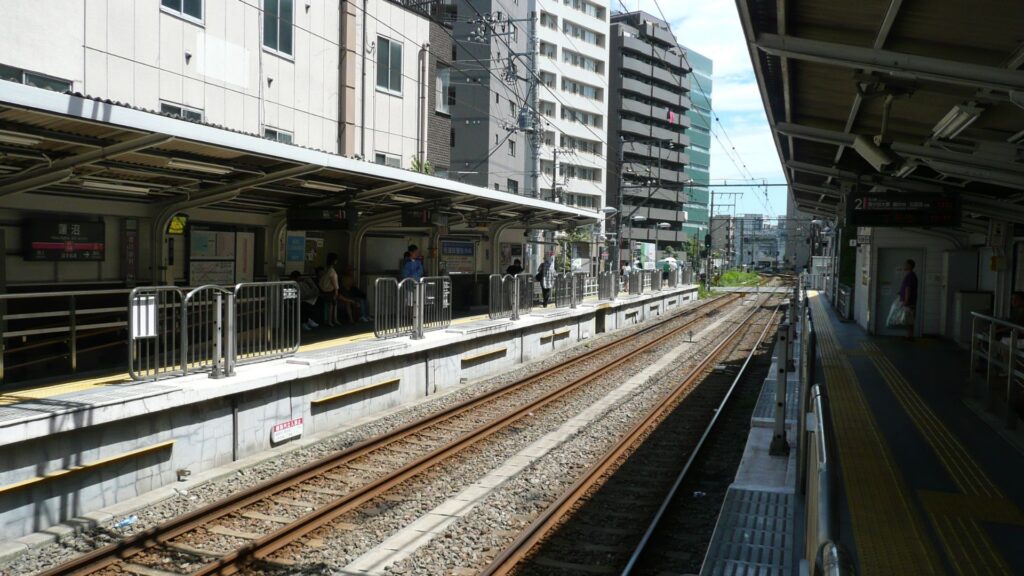
Located at the west exit of Kamata Station, Hasunuma features a postwar atmosphere with its restaurant district behind Tokyo Kamata Hospital. It retains a minor, yet charming feel. Meguro’s sophisticated charm provides a perfect contrast to Hasunuma’s nostalgic vibe.
Ikegami 池上

Ikegami is home to Ikegami Honmonji Temple, the head temple of the Nichiren sect of Buddhism. The shopping street in front of the station resembles the Sugamo Jizo Street in Jonan, with a high percentage of elderly residents. The annual Gokai Ceremony is also famous. Meguro’s mix of old and new complements Ikegami’s historical significance.
Ontakesan 御嶽山
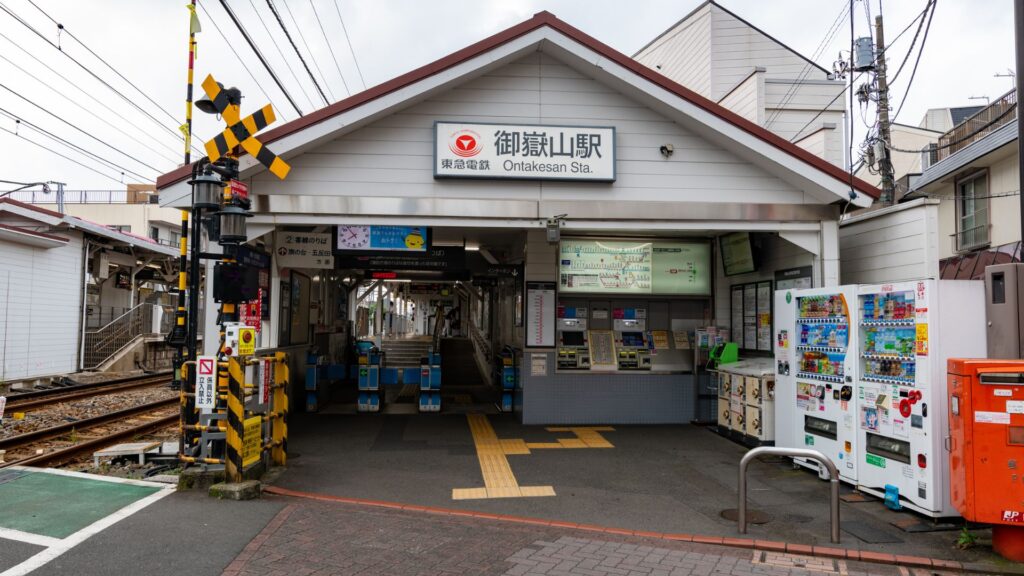
Ontakesan features a simple downtown shopping street and the majestic Ontake Shrine, the first branch shrine of Kiso Ontakesan from the Edo period. Meguro’s rich cultural scene provides a fitting backdrop to Ontakesan’s historical charm.
Yukigaya-Otsuka/Ishikawadai 雪が谷大塚・石川台

This area is on the eastern edge of Denenchofu, known for its exclusive residential status. The shopping district in front of the station has a downtown flavour. Meguro’s upscale vibe complements the semi-luxury residential areas of Denenchofu 1-chome and 2-chome.
Senzokuike/Nagahara 洗足池・長原

Near Senzokuike Station, the low guard that requires adults to bend over to pass under it is a unique feature. The area around Senzokuike Park is an excellent residential area. Meguro’s serene parks and residential charm add to the allure of Senzokuike and Nagahara.
Ookayama and Kita-Senzoku

The only areas along the Tokyu Oimachi Line covered by Ota Ward, Ookayama and Kita-Senzoku, have nothing in particular to rush into. However, Meguro’s vibrant community and attractions make these areas worth exploring.
Tokyu Tamagawa Line and Tokyu Toyoko Line
Yaguchiwatashi and Musashishinden 矢口渡・武蔵新田
Riverside towns along the Tokyu Tamagawa Line, Yaguchiwatashi and Musashishinden, feature many factories typical of Ota Ward. Across the bridge lies Komukai in Kawasaki, home to a large Toshiba factory. Musashinden once had a red-light district for munitions factory workers. Nearby Meguro provides a contrasting experience with its residential and cultural attractions.
Shimomaruko/Unoki 下丸子・鵜の木
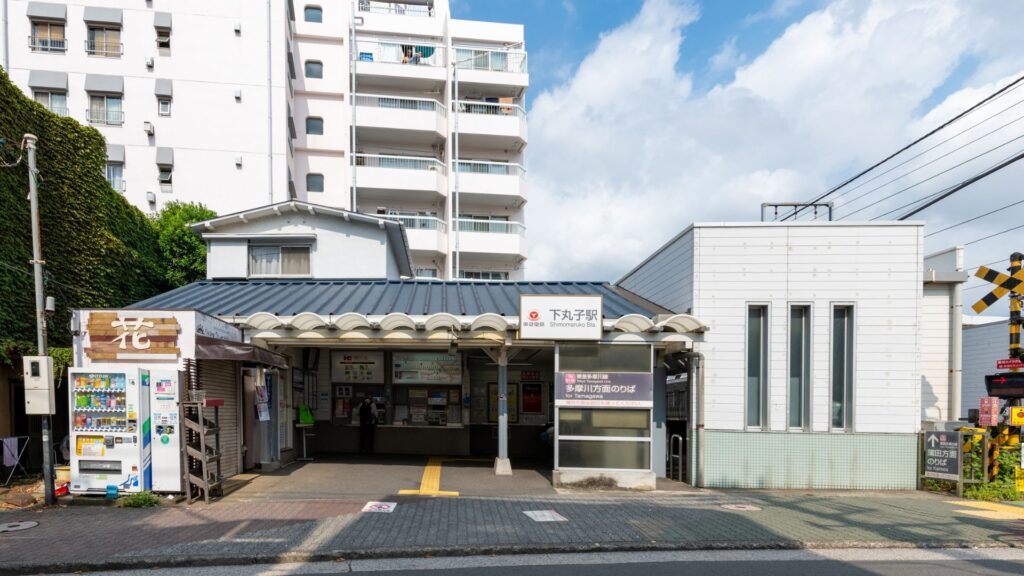
Facing the Musashi Kosugi tower blocks across the river, Shimomaruko and Unoki are near the Tama River gas bridge and house a Canon factory, a cluster of large condominiums, and a large facility of the Soka Gakkai. Meguro’s vibrant community and rich culture offer a delightful contrast.
Tamagawa/Numabe 多摩川・沼部
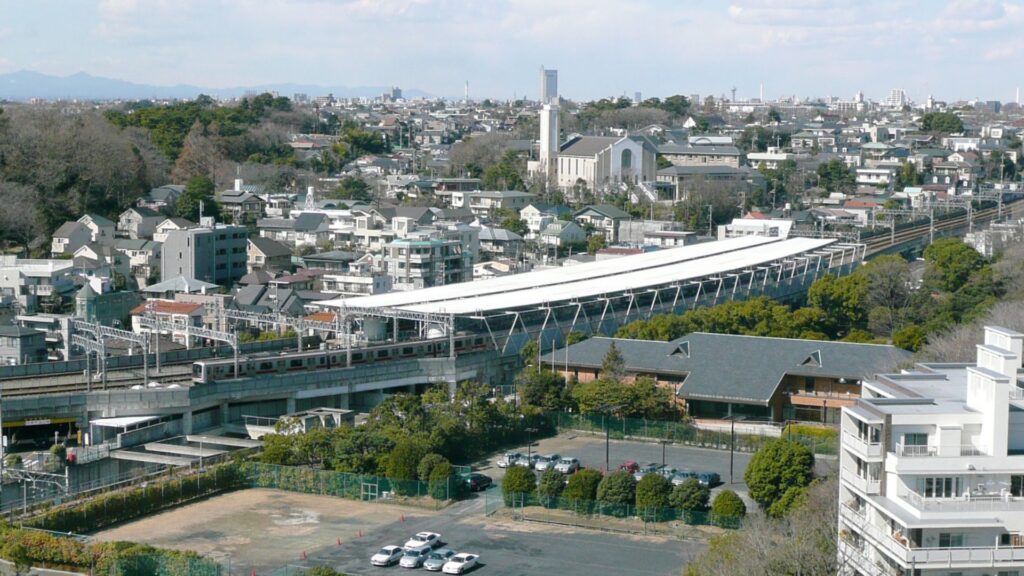
Located on the outskirts of Denenchofu, Tamagawa and Numabe face the Tama River directly. The downtown shopping district of Denenchofu 5-chome does not resemble Denenchofu’s typical appearance. Part of the old amusement park, Tamagawaen, is now occupied by the Seisei Korin, a new religious organisation. Meguro’s mix of traditional and modern elements provides an interesting contrast to these areas.
Denenchofu 田園調布
Denenchofu is synonymous with a prestigious luxury residential area, featuring large mansions based on the radial road created by Eiichi Shibusawa. The area is home to many prominent figures in the political and business worlds. Meguro’s own prestigious areas and cultural attractions complement the luxurious ambiance of Denenchofu.
What to Do in Ota Ward
Ikegami Honmon-ji 池上本門寺

Ikegami Honmon-ji is the head temple of Nichiren Shoshu and is known as the site of Nichiren Shonin’s death. Within the temple grounds are many nationally important cultural properties and tangible cultural properties designated by the Tokyo Metropolitan Government, including the five-story pagoda of Ikegami Honmon-ji and a wooden seated statue of Nichiren Shonin.
The “Okaeshiki Buddhist Service,” held annually on October 11, 12, and 13, attracts as many as 300,000 visitors on the evening of October 12. The highlight of the festival is the “Manto Neri Kuyo,” a procession of about 3,000 people carrying manto lanterns decorated with cherry blossoms. Meguro also offers numerous cultural sites worth exploring.
Find out more about Ikegami Honmon-ji here on Google maps.
Jonanjima Seaside Park 城南島海浜公園
Jonanjima Seaside Park is located in Jonanjima, Ota-ku, facing Tokyo Bay. The park has a campsite, barbecue area, and skateboarding plaza, making it a popular leisure spot for families and people of all ages. Close to Haneda Airport and the Port of Tokyo, it is an excellent location for fans of ships and aviation. They can see aeroplanes taking off and landing at the airport and large ships entering and leaving the port. Meguro, with its own parks and cultural sites, is a nearby destination worth visiting.
Find out more about Jonanjima Seaside Park here on Google maps.
Ontake Shrine 御嶽神社

This ancient temple, nicknamed “Ontake-san of Mine,” is said to have been built around 1535. It is the first branch shrine of Kiso Ontake in the Kanto region. It was believed that visiting the Ontake Shrine in Mine three times equalled a visit to Kiso Ontake once. The present Ontake Shopping Arcade and Ontake Station developed from stores opened for worshippers.
The main shrine, a designated cultural property of the ward, features carvings on the walls from the end of the Edo period. A tranquil forest named “Reishin-no-mori” is at the back of the shrine. Meguro’s shrines and peaceful atmosphere make it a lovely complement to Ontake Shrine.
Find out more about Ontake Shrine here on Google maps.
Keihinjima Tsubasa Park 京浜島つばさ公園
Keihin Island is a man-made island with an area of about 100 hectares. Keihinjima Tsubasa Park is a metropolitan park about 1 km long along the eastern shore of the island, which is mainly industrial. Haneda Airport is right in front of the park, allowing visitors to watch aeroplanes taking off and landing.
The grassy northern area of the park is a popular BBQ spot, especially on weekends. The park is covered with walking trails, attracting many for walking and running regardless of the season. Public restrooms and free parking are also available. Meguro’s parks and green spaces offer another scenic respite for nature lovers.
Find out more about Keihinjima Tsubasa Park here on Google maps.
Ikegami Plum Garden 池上梅園
Ikegami Umeen is a plum orchard located in Ota Ward, Tokyo. About 370 plum trees, the flower of Ota Ward, bloom here in early spring. The garden also features approximately 800 azalea and other trees, a tea ceremony room, and a Japanese-style room. It was originally the home and studio (Gassan Sanso) of Japanese-style painter Shinsui Ito and was transferred to the Tokyo Metropolitan Government on the condition that the garden is preserved. Nearby Meguro also offers beautiful gardens and historical sites for a delightful day out.
Find out more about Ikegami Plum Garden here on Google maps.
Tamagawa Sengen-jinja Shrine 多摩川浅間神社

This shrine enshrines Kihanasakuyahime no Mikoto, the deity of family happiness, easy childbirth, and safe childbirth. Founded over 800 years ago, the shrine’s history dates back to when Masako Hojo, wife of Lord Minamoto no Yoritomo, rested here while travelling to Mt. Fuji. The shrine’s red seal, whose design changes monthly, is very popular. Meguro’s historical temples and shrines provide additional rich cultural experiences.
Find out more about Tamagawa Sengen-jinja Shrine here on Google maps.
Tokyo Port Wild Bird Park 東京港野鳥公園
A 15-minute walk from Tokyo Monorail Ryutsu Center Station, this metropolitan wild bird park is surrounded by the Wangan Road and Metropolitan Expressway. The park was established when many wild birds migrated to the grasslands and ponds created during the reclamation of Tokyo Bay.
Around 120 species of waterfowl visit annually, with 227 species observed since its opening. This 36-hectare park is a valuable habitat for wild birds and waterfront creatures. Meguro’s own natural parks and wildlife areas offer additional opportunities for nature enthusiasts.
Find out more about Tokyo Port Wild Bird Park here on Google maps.
Kamata Onsen 蒲田温泉
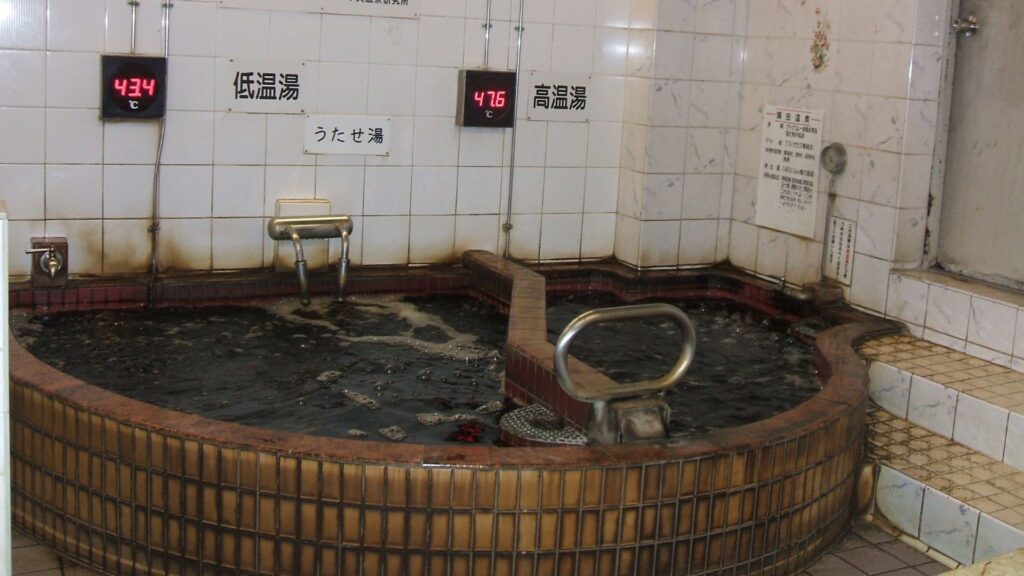
Established in 1937, Kamata Onsen is a public bathhouse featuring sodium bicarbonate and chloride mineral spring water, known as “kuroyu” (black water) because of its colour. The bathhouse includes hot and cold bathtubs, a jet bath, an electric bath, a water bath, and a sauna. On the second floor, visitors can enjoy karaoke, eating, and drinking, providing a hot spring trip experience. Meguro’s upscale spas and wellness centres offer another luxurious relaxation option.
Find out more about Kamata Onsen here on Google maps.
Hasunuma Onsen はすぬま温泉
This natural hot spring, with a Taisho-romantic concept, features an interior design reminiscent of Dogo Onsen in Ehime. The light yellowish-brown clear water is 100% free-flowing. The spring is known for its beauty benefits and effectiveness for cuts, chronic skin diseases, and chronic digestive diseases.
The free herbal tea served after bathing is also a nice touch. The warm lighting inside the bathhouse makes the stained glass windows on the exterior even more beautiful at night. Meguro’s elegant spas provide additional pampering experiences.
Find out more about Hasunuma Onsen here on Google maps.
Shōwa Era Lifestyle Museum 昭和のくらし博物館
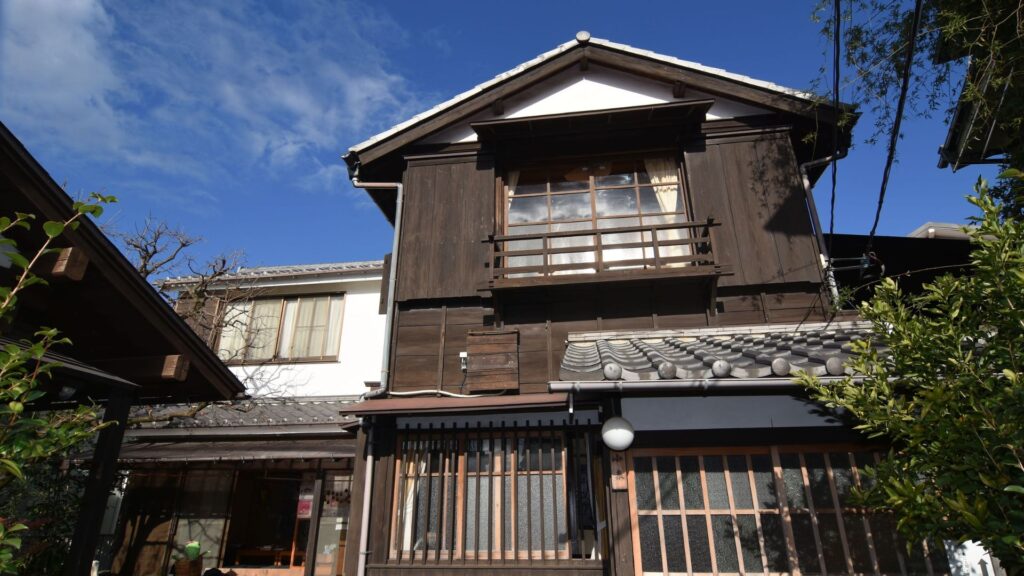
This museum, designated as a registered tangible cultural property, preserves a house built in 1951, showcasing household goods and the lives of common people during the Shōwa period. The museum holds special exhibits with each room having a different theme, recreating daily life according to the four seasons. Meguro’s museums and cultural centres offer further exploration of Tokyo’s rich history.
Find out more about Shōwa Era Lifestyle Museum here on Google maps.
Hōrai Park 大田区立宝来公園
Originally a plaza created in 1925 to preserve the old Musashino landscape, Hōrai Park was reopened as the current park in 1944. About a 6-minute walk from Denenchofu Station, the quiet park features 70 varieties of trees, including plum, cherry, camellia, and sasanqua. In May, about 300 kishoubu (Japanese flowering plants) bloom, making the park a popular destination. Meguro’s lush parks and scenic areas offer another peaceful retreat.
Find out more about Hōrai Park here on Google maps.
Accommodations in Ota City Ward
The Royal Park Hotel Tokyo Haneda (4 Stars)

Shinagawa Station is an 11-minute ride away by the Airport Rapid Limited Express train, and Hamamatsucho is a 13-minute ride away by the Tokyo Monorail Haneda Express. Shibuya can be accessed by taking the Keikyu Line to Shinagawa, then transferring to the JR Line. Guests can also enjoy a free coffee takeout service if they are scheduled for an international flight after check-out.
Hotel Oriental Express Tokyo Kamata (3 Stars)

Conveniently set in the Ota Ward district of Tokyo, Hotel Oriental Express Tokyo Kamata is located 1.8 km from Omori Hachiman Shrine, 1.9 km from Uramori Inari Shrine, and 2 km from Miwa Itsukushima Shrine. Gonsho-ji Temple is 2.3 km from Hotel Oriental Express Tokyo Kamata, while Tokujo-ji Temple is 2.4 km away. The nearest airport is Tokyo Haneda International Airport, 13 km from the hotel. Meguro’s selection of hotels offers more accommodation choices.
Hotel JAL City Haneda Tokyo West Wing (4 Stars)

Conveniently located 10 minutes from Haneda Airport by train on the Keikyu Airport Line, Hotel JAL City Haneda Tokyo West Wing is a 4-minute walk from Anamori-inari Station. Tenkubashi Station on the Tokyo Monorail Line is a 12-minute stroll from this hotel. Ooedo Onsen Monogatari is a 50-minute train ride away on the Keikyu-Kuko Line and Yurikakome Line. Fuji TV Odaiba, a popular area for shopping and dining, is 50 minutes away on the Keikyu Line. Meguro’s hotel selection offers alternative options for a comfortable stay.
Art Apartment AOCA Sanno OLIVE (3 Stars)

Located in Tokyo, 700 m from Atre Omori and 800 m from Shopping Mall Omori Rara, Art Apartment AOCA Sanno OLIVE is close to popular points of interest, including Omori Sanno Hie Shrine, Enno-ji Temple, and Omori Shell Mounds. Meguro’s unique accommodation options provide additional choices for visitors.
Red Roof Inn Kamata / Haneda Tokyo (3 Stars)
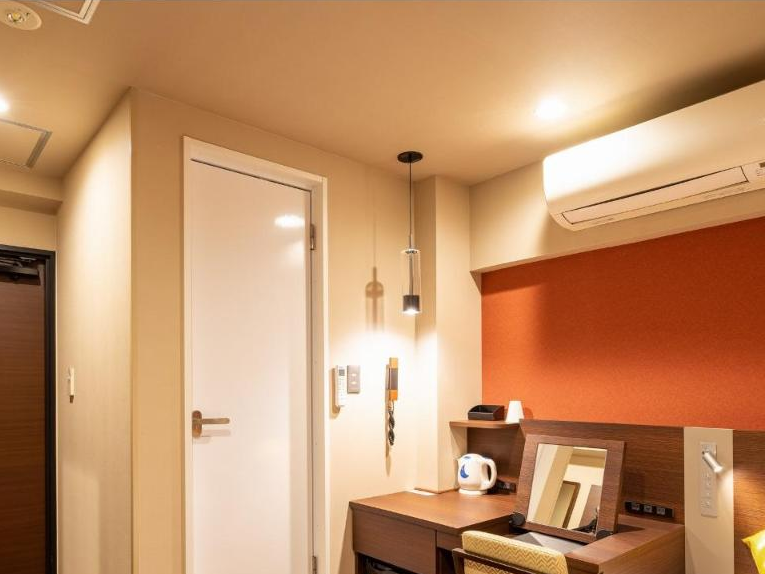
Red Roof Inn Kamata / Haneda Tokyo is located in Tokyo, 7 km from Tokyo International Airport Terminal No2 Observation Deck. Each room comes with a flat-screen TV. Oedo Onsen Monogatari is 8 km from Red Roof Inn Kamata / Haneda Tokyo, while Ebisu Garden Place is 9 km from the property. The nearest airport is Tokyo Haneda International Airport, 5 km from Red Roof Inn Kamata / Haneda Tokyo. Meguro’s accommodation options offer more variety for different preferences.
KEIKYU EX INN Kamata (3 Stars)
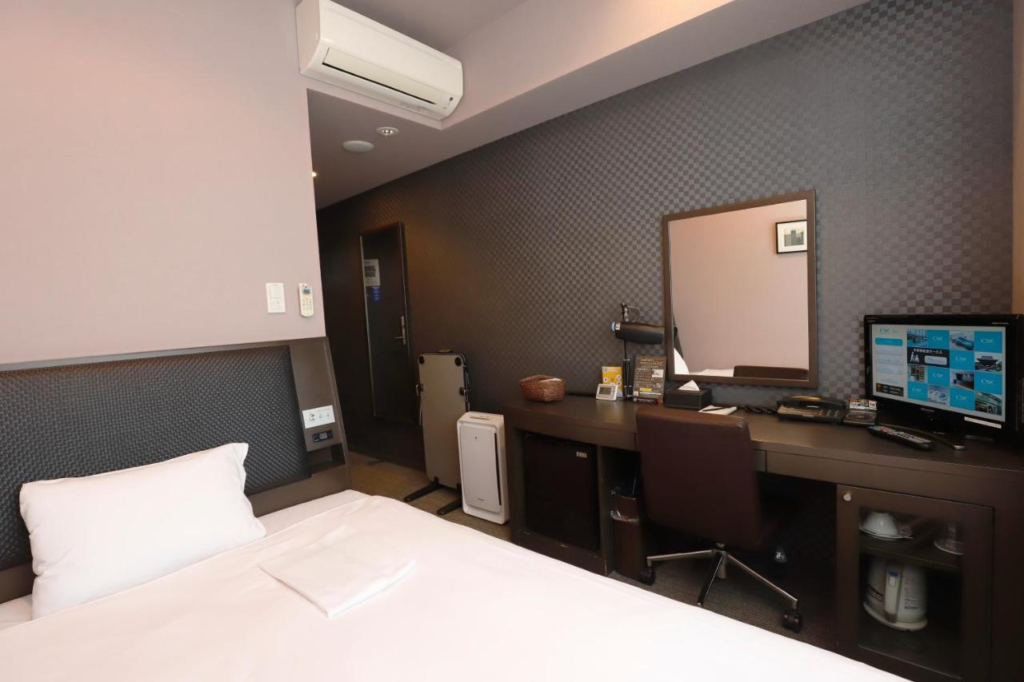
In a prime location in the Ota Ward district of Tokyo, KEIKYU EX INN Kamata is located 1.2 km from Omori Hachiman Shrine, 1.6 km from Miwa Itsukushima Shrine, and 1.8 km from Tokujo-ji Temple. The property is around 2.4 km from Omori Furusato-no-Hamabe Park, 2.4 km from Morigasaki Kotsu Park, and 2.7 km from Omori Nori Museum. Heiwa no Mori Park is 2.9 km from the hotel. Popular points of interest near KEIKYU EX INN Kamata include Gonsho-ji Temple, Kifune Shrine, and Uramori Inari Shrine. Meguro’s hotels offer additional comfort and convenience for visitors.
IKIDANE Cosy Hotel Haneda Airport
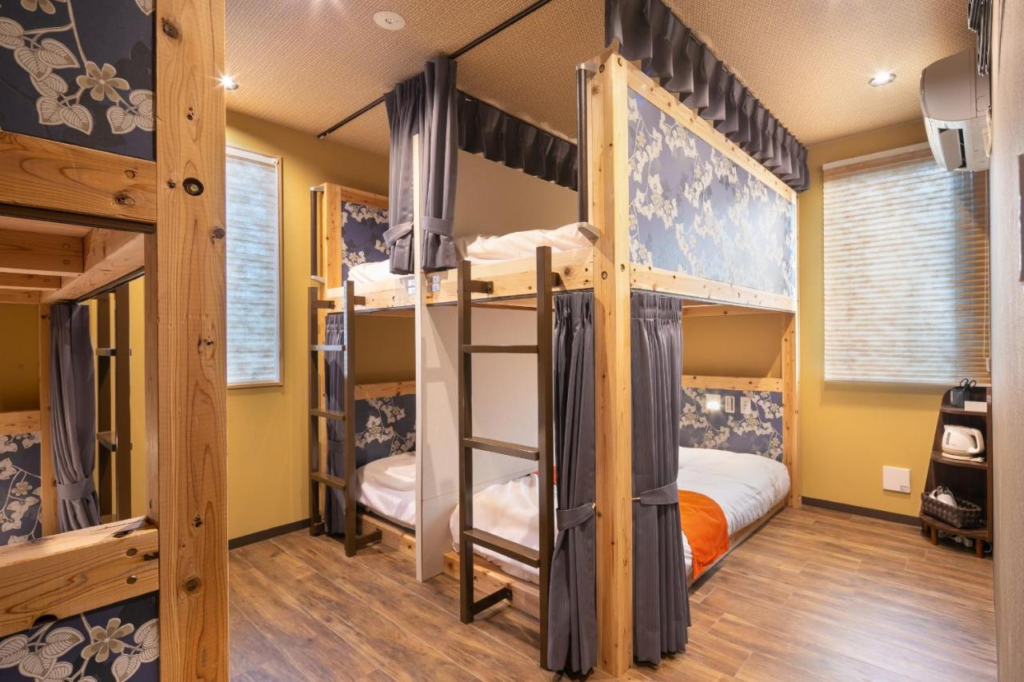
Located in Tokyo, 2.6 km from Morigasaki Kotsu Park. The property is situated 2.6 km from Uramori Inari Shrine, 3.1 km from Miwa Itsukushima Shrine, and 3.4 km from Omori Hachiman Shrine. The property is 4.4 km from Tokyo International Airport Terminal No2 Observation Deck and 5 km from Tokujo-ji Temple. Kifune Shrine is 3.8 km from IKIDANE Cozy Hotel Haneda, while Gonsho-ji Temple is 3.9 km away. The nearest airport is Tokyo Haneda International Airport, 10 km from the accommodation. Meguro’s cosy hotels offer additional options for a pleasant stay.
HIROKI Building (3 Stars)

Located in Tokyo, HIROKI Building provides city views and free WiFi, 2.8 km from Omori Hachiman Shrine and 3 km from Miwa Itsukushima Shrine. Uramori Inari Shrine is 3.1 km from the apartment, while Gonsho-ji Temple is 3.3 km away. The nearest airport is Tokyo Haneda International Airport, 15 km from HIROKI Building. Meguro’s accommodations offer more choices for travellers.
Unveiling Ota Ward’s Hidden Charm
What do you think about Ota Ward in Tokyo? Do you enjoy uncovering the history and culture of this fascinating area? This local neighborhood is brimming with rich history and unique activities that offer a glimpse into Tokyo’s lesser-known charm.
From historic temples to local markets, there is always something new to discover. If you’re planning a visit, make sure to refer back to this blog for tips and insights to make the most of your journey. Dive into the heart of Ota Ward and experience its unique allure firsthand.

